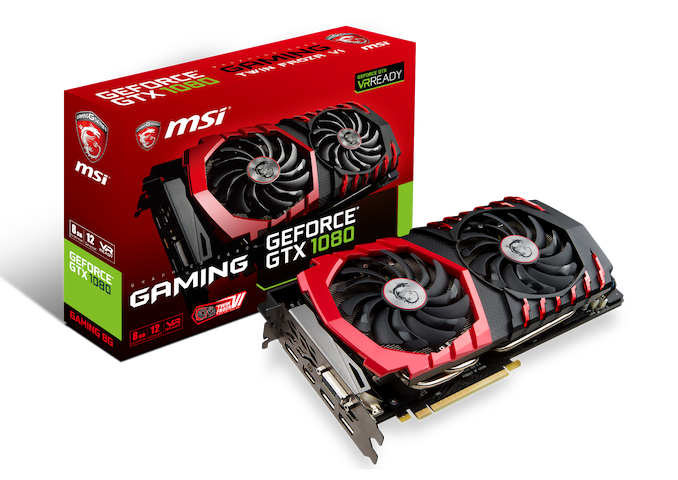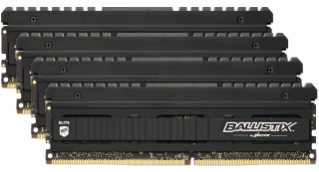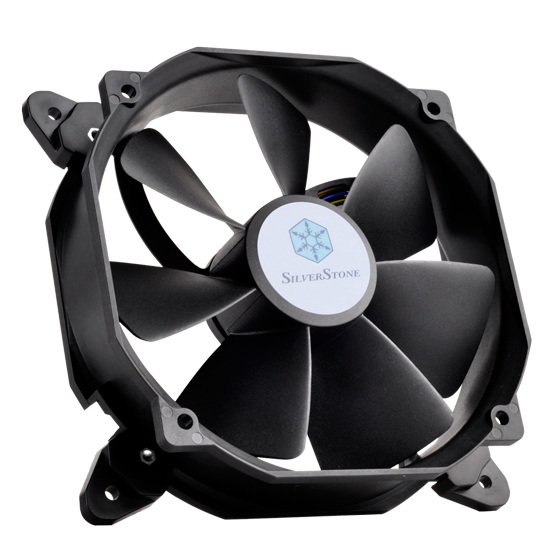The ASRock X570 Aqua: A $1000 Ryzen Halo Motherboard Reviewed
by Gavin Bonshor on December 19, 2019 9:00 AM ESTBoard Features
The ASRock X570 Aqua is an EATX motherboard and is easily one of its most extravagant models yet. The X570 Aqua is a halo product which sits right at the top of ASRock's X570 product stack with the main feature focused around its integrated monoblock which cools the CPU, the power delivery, and the X570 chipset with the use of water. Users looking to purchase this model will need an adequate custom water cooling loop. Other primary features include the use of an Intel Thunderbolt 3 controller which adds two USB 3.1 G2 Type-C ports on the rear panel, as well as a DisplayPort 1.4 input so users can run multiple 4K displays from a single graphics card. The ASRock X570 Aqua has two PCIe 4.0 x4 M.2 slots, with eight SATA ports which are split into two pairs four; four are controlled by the chipset and offer RAID 0, 1, and 10 RAID support. The other four SATA ports are controlled by an ASMedia ASM1061 SATA controller. PCI support consists of two full-length PCIe 4.0 slots which operate at x16, and x8/x8, with a further third full-length slot which is locked down to PCIe 4.0 x4. There are also three PCIe 2.0 x1 slots located sandwiched between the full-length slots.
| ASRock X570 Aqua EATX Motherboard | |||
| Warranty Period | 3 Years | ||
| Product Page | Link | ||
| Price | $1000 | ||
| Size | EATX | ||
| CPU Interface | AM4 | ||
| Chipset | AMD X570 | ||
| Memory Slots (DDR4) | Four DDR4 Supporting 128 GB Dual Channel Up to DDR4-5200 |
||
| Video Outputs | 1 x HDMI 2.0 | ||
| Network Connectivity | Aquantia AQC107 10 G Intel I211-AT 1 G Intel AX200 Wi-Fi 6 802.11ax |
||
| Onboard Audio | Realtek ALC1220 TI NE5532 Amp (Front Panel) |
||
| PCIe Slots for Graphics (from CPU) | 2 x PCIe 4.0 x16 (x16, x8/x8) | ||
| PCIe Slots for Other (from PCH) | 1 x PCIe 4.0 x4 3 x PCIe 2.0 x1 |
||
| Onboard SATA | Four, RAID 0/1/10 (X570) Four, (ASMedia ASM1061) |
||
| Onboard M.2 | 2 x PCIe 4.0 x4 | ||
| USB 3.1 (10 Gbps) | 2 x Type-C Rear Panel (Thunderbolt 3) 1 x Type-C Header (1 x port) |
||
| USB 3.0 (5 Gbps) | 6 x Type-A Rear Panel 2 x Type-A Header (4 x ports) |
||
| USB 2.0 | 1 x Type-A Header (2 x ports) | ||
| Power Connectors | 1 x 24-pin ATX 1 x 8pin CPU 1 x 4pin CPU |
||
| Fan Headers | 1 x CPU (4-pin) 1 x Water Pump (4-pin) 3 x System (4-pin) |
||
| IO Panel | 6 x USB 3.1 G1 Type-A 2 x USB 3.1 G2 Type-C (Thunderbolt 3) 1 x Network RJ45 10 G (Aquantia) 1 x Network RJ45 1 G (Intel) 5 x 3.5mm Audio Jacks (Realtek) 1 x S/PDIF Output (Realtek) 2 x Intel AX200 Antenna Ports 1 x USB BIOS Flashback Button 1 x PS/2 Combo port 1 x DisplayPort 1.4 Input 1 x HDMI 2.0 output |
||
On the networking side, ASRock includes two Ethernet controllers which consist of an Aquantia AQC107 10 G and Intel I211-AT 1 G. For wireless, there is an Intel AX200 802.11ax Wi-Fi 6 wireless interface which also adds BT 5.0 connectivity. The rear panel omits any USB 3.1 G2 Type-A, but instead opts for six G1 Type-A ports, in addition to the two USB 3.1 G2 Type-C Thunderbolt 3 ports. Also featured is a single HDMI 2.0 video output, five 3.5 mm audio jacks and S/PDIF optical out powered by a Realtek ALC1220 HD audio codec, a P/S2 combo port, and a USB BIOS Flashback button. One of the most impressive technical features is that the X570 Aqua has support for DDR4-5200 memory out of the box, with a total capacity of up to 128 GB.
Test Bed
As per our testing policy, we take a high-end CPU suitable for the motherboard that was released during the socket’s initial launch and equip the system with a suitable amount of memory running at the processor maximum supported frequency. This is also typically run at JEDEC subtimings where possible. It is noted that some users are not keen on this policy, stating that sometimes the maximum supported frequency is quite low, or faster memory is available at a similar price, or that the JEDEC speeds can be prohibitive for performance. While these comments make sense, ultimately very few users apply memory profiles (either XMP or other) as they require interaction with the BIOS, and most users will fall back on JEDEC supported speeds - this includes home users as well as industry who might want to shave off a cent or two from the cost or stay within the margins set by the manufacturer. Where possible, we will extend out testing to include faster memory modules either at the same time as the review or a later date.
While we have been able to measure audio performance from previous Z370 motherboards, the task has been made even harder with the roll-out of the Z390 chipset and none of the boards tested so far has played ball. It seems all USB support for Windows 7 is now extinct so until we can find a reliable way of measuring audio performance on Windows 10 or until a workaround can be found, audio testing will have to be done at a later date.
| Test Setup | |||
| Processor | AMD Ryzen 3700X, 65W, $329 8 Cores, 16 Threads, 3.6 GHz (4.4 GHz Turbo) |
||
| Motherboard | ASRock X570 Aqua (BIOS 1.40 - ABBA) | ||
| Cooling | Corsair Custom Cooling XD5 Pump/Reservoir, 240mm radiator |
||
| Power Supply | Thermaltake Toughpower Grand 1200W Gold PSU | ||
| Memory | 2x8GB G.Skill TridentZ DDR4-3200 16-16-16-36 2T | ||
| Video Card | ASUS GTX 980 STRIX (1178/1279 Boost) | ||
| Hard Drive | Crucial MX300 1TB | ||
| Case | Open Benchtable BC1.1 (Silver) | ||
| Operating System | Windows 10 1903 inc. Spectre/Meltdown Patches | ||
Readers of our motherboard review section will have noted the trend in modern motherboards to implement a form of MultiCore Enhancement / Acceleration / Turbo (read our report here) on their motherboards. This does several things, including better benchmark results at stock settings (not entirely needed if overclocking is an end-user goal) at the expense of heat and temperature. It also gives, in essence, an automatic overclock which may be against what the user wants. Our testing methodology is ‘out-of-the-box’, with the latest public BIOS installed and XMP enabled, and thus subject to the whims of this feature. It is ultimately up to the motherboard manufacturer to take this risk – and manufacturers taking risks in the setup is something they do on every product (think C-state settings, USB priority, DPC Latency / monitoring priority, overriding memory sub-timings at JEDEC). Processor speed change is part of that risk, and ultimately if no overclocking is planned, some motherboards will affect how fast that shiny new processor goes and can be an important factor in the system build.


















84 Comments
View All Comments
TheinsanegamerN - Thursday, December 19, 2019 - link
What a worthless board. It doesnt matter how cool those power components are VS other boards, the performance isnt even there. The fact that this board more often then not is on the lower end of many of the performance graphs says a LOT. Ryzen 3000 just doesnt have any headroom left in it!To meet the fool that would spend a GRAND on this thing. I'll hapilly sell him my athlon 64 system for $850. Even for heavy use of a 3950x this board doesnt offer anything that a dedicated CPU block cant already do. The fact you can set up a custom loop, buy a high end X570 board, case, case fans, and other goodies and still spend less money then this board alone costs is impressive.
hbsource - Thursday, December 19, 2019 - link
I think you're being too narrow in the 'worth' of this product. It's 'worthless' to you because of performance numbers.A Chanel handbag has the same performance numbers as a free plastic bag. But it is worth a lot more.
TheinsanegamerN - Thursday, December 19, 2019 - link
What "worth" does this board offer? If it has no performance boost, what exactly is the point? To be fashionable?The chanel handbag comparison doesnt work, a free plastic bag wont last nearly as long in day to day use, they are meant to be temporary. The chanel bag will at least work properly for awhile, assuming you take care of it. But the *worth* of that bag comes from its designer pedigree. Asrock doesnt have that. Asrock isnt considred a premium brand. Besides, you dont strut around with your motherboard in hand, it goes into your computer where likely you are the only one whom will ever see it. Outside of a sig on your forum handle, nobody will know you spent a grand on this thing.
computer parts are sold on performance, not fashion. Even if your idea of "performance" is low temps, there already exist waterblocks to cool down motherboards, for a tenth the price. This thing is a total waste of money.
Vepsa - Thursday, December 19, 2019 - link
The worth as I see it for most systems built with this board are going to be show off systems in a store that show how cleanly the builder can build a watercooled system. Nothing else. If I were a small system builder (actually a dream of mine to open a computer store near where I live), that is what I'd use it for. Is it worth it do you? Nope, but thats fine. Its not meant to be worth it to everyone.A5 - Thursday, December 19, 2019 - link
Small-time system builders don't have the margins to waste a grand on this kind of thing as a "show piece", unless they're hoping to sell it to some rich sucker for a huge markup.Foeketijn - Friday, December 20, 2019 - link
Depends on your clientèle. I can even imagen some fancy workplace-o-rent asking for 15 of these systems.Try to buy a well speced boutique system with an 3950X 64Gb 4Tb SSD etc without at least a 1k mark up. Or just any Apple Workstation. As long as you don't join the race to the bottom, there is enough margin in the retail industry.
goatfajitas - Thursday, December 19, 2019 - link
"computer parts are sold on performance, not fashion"That is not true. True for some sure, but not overall true.
bji - Thursday, December 19, 2019 - link
True for the vast majority, not just some.FreckledTrout - Thursday, December 19, 2019 - link
I would bet looks cover a vast majority especially if we count laptops.lazarpandar - Thursday, December 19, 2019 - link
We're talking about motherboards... an internal component of desktops. Attempting to include more products to accomodate hbsource's insane analogy is dishonest.